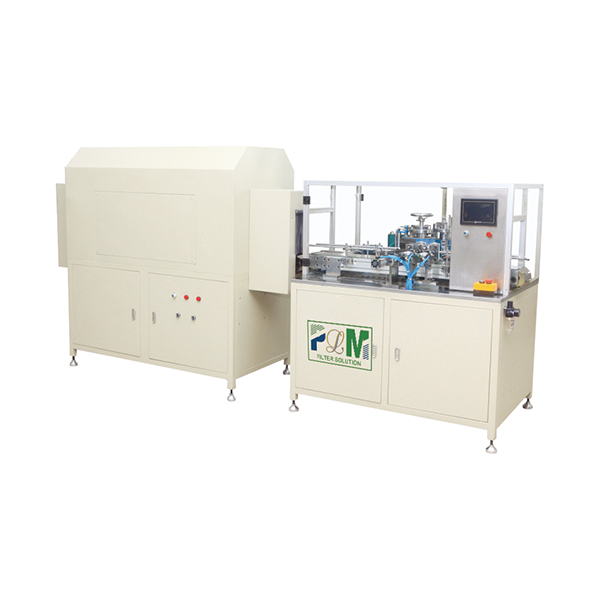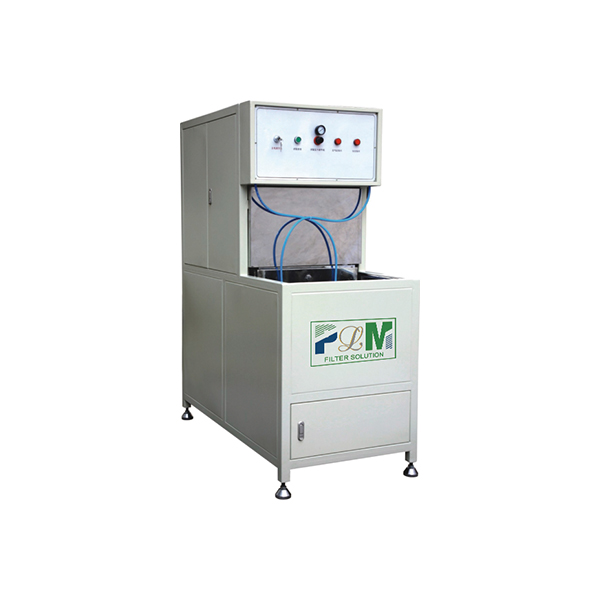Nov . 17, 2025 23:30 Back to list
What is a Reverse Osmosis Unit Water Purifier? Benefits, Applications & Trends
Why Reverse Osmosis Unit Water Purifiers Matter in Today’s Water Crisis
Water is, without exaggeration, the most precious resource on Earth—imperative for life, industry, and health. Yet, fresh, clean drinking water remains elusive for millions worldwide. Enter the reverse osmosis unit water purifier: a powerful filtering technology increasingly relied upon to crack one of humanity's toughest nuts—safe, affordable water for all.
Understanding how these purifiers operate and their growing global significance is more than technical trivia; it's about appreciating a technology tackling real crises—from drought-stricken communities to urban industrial zones seeking purity in process water.
The Global Context: Water Scarcity, Pollution, and the Rise of Reverse Osmosis
According to the UN Water Development Report (2023), over 2 billion people experience water scarcity at least one month annually. Industrial pollution further complicates access to safe water. The reverse osmosis unit water purifier has emerged as a go-to solution in this landscape. The reverse osmosis unit water purifier technology efficiently removes dissolved solids, heavy metals, and even microorganisms, offering a lifeline in areas struggling with water quality.
In real terms, this technology addresses challenges both urgent and mundane—enabling reliable potable water in refugee camps, ensuring quality control in food production, and safeguarding hospital utilities.
Mini takeaway: The reverse osmosis purifier isn't just a gadget; it's a pivotal player in the global water-security game.
What Exactly Is a Reverse Osmosis Unit Water Purifier?
At its core, a reverse osmosis (RO) unit is a filtration system that forces water through a semipermeable membrane. This membrane only allows water molecules to pass, blocking contaminants like salts, bacteria, and chemicals. Sounds simple, but the process involves sophisticated engineering to maintain pressure, flow rate, and membrane integrity.
Many industries and humanitarian efforts hinge on the convenience and effectiveness of these units—they convert even brackish or contaminated water into safe drinking water, a true game-changer.
Essential Components and Factors Behind Efficient RO Units
1. Membrane Quality and Durability
The semipermeable membranes are the heart of the system. High-quality membranes resist fouling and degradation, prolonging the unit's operational life. Today’s membranes often feature thin-film composites enabling higher flux rates.
2. System Scalability
RO units come in varying sizes—from compact domestic purifiers to massive industrial setups processing thousands of liters daily. Scalability ensures that the same core tech suits households, factories, or remote villages.
3. Energy Efficiency
Energy consumption can be a sticking point. Modern purifiers often integrate energy recovery devices or leverage low-pressure membranes to keep operational costs manageable.
4. Pre-treatment and Maintenance
Pre-treatment filters (like carbon or sediment filters) protect membranes, enhancing longevity and water quality. Regular maintenance is crucial but increasingly user-friendly with automated cleaning cycles.
5. Cost-effectiveness
Balancing purchase price, running expenses, and reliability is key to widespread adoption, especially in low-income or emergency settings.
Product Specification Table for a Typical Reverse Osmosis Unit
| Parameter | Specification |
|---|---|
| Membrane Type | Thin-film composite (TFC) |
| Flow Rate | 500 liters per hour (lph) |
| Recovery Rate | 45–55% |
| Energy Usage | 2.5 kWh per 1000 liters |
| Operating Pressure | 150–300 psi |
| Dimensions (L×W×H) | 120 × 60 × 140 cm |
Where Reverse Osmosis Units Are Changing the Game
RO purifiers have found homes in surprising places. For example:
- Humanitarian aid and disaster relief: After natural disasters, when infrastructure is devastated, portable RO units provide safe water quickly, preventing disease outbreaks.
- Agriculture and irrigation: Purifiers help remove salts from brackish groundwater, supporting crops in arid zones.
- Small-scale industry: From food processing plants to electronics manufacturing, pure water is a must—RO units provide cost-effective solutions.
- Urban households: Increasingly, home units offer clean drinking water free from municipal inconsistencies.
Oddly enough, even remote mining camps use RO purifiers to sustain workers and equipment—a kind of survival essential in the harshest environments.
Mini takeaway: No matter how niche the setting, these purifiers seem to fit right in—offering versatility few other water treatments can match.
Advantages and the Lasting Value of RO Purifiers
Why do organizations and homeowners keep investing in reverse osmosis? The answers span practical to emotional:
- Consistent water quality: Removing nearly 99% of contaminants ensures health safety.
- Cost savings: Less bottled water dependence, fewer medical bills related to waterborne illnesses.
- Environmental benefits: Using less plastic, with greater water reuse options.
- Dignity and independence: Access to clean water locally promotes self-reliance.
- Reliability in critical sectors: Hospitals and labs trust RO units for their operations.
There’s a kind of quiet trust people place in these devices—you don’t see them, but when water tastes and feels clean, you know they’re there doing their job steadily.
Future Trends & Innovations in Reverse Osmosis Technology
Looking forward, the evolution of reverse osmosis technology is exciting. Here are trends to watch:
- Green energy integration: Solar-powered RO units reduce grid reliance.
- Smart automation: IoT sensors monitor water quality and alert for maintenance needs.
- Advanced membrane materials: Graphene-enhanced membranes promise higher efficiency and fouling resistance.
- Modular designs: Allowing quick assembly and deployment in emergencies or remote sites.
The marriage of sustainability and digital tech feels like the natural next step for this industry.
Challenges and How Industry Leaders Are Tackling Them
It's not all smooth sailing. Reverse osmosis units face challenges like:
- Membrane fouling: Buildup of contaminants reduces efficiency.
- High energy consumption: Especially for large units.
- Wastewater generation: RO produces brine that must be managed carefully.
- Upfront costs: Can be prohibitive for some applications.
Experts recommend combining RO with advanced pre-treatment filters, energy recovery devices, and smart monitoring to minimize these pain points. Some companies explore solar-powered, low-pressure membranes to reduce energy use.
Personally, it feels like the technology is mature, but exactly where to deploy it and how to maintain it well still requires skill and dedication.
Vendor Comparison: Leading Reverse Osmosis Unit Water Purifiers
| Vendor | Flow Rate (lph) | Energy Use (kWh/1000L) | Price Range (USD) | Special Features |
|---|---|---|---|---|
| PureFlow Systems | 450 | 2.8 | $1,200–$3,000 | Solar compatible, IoT-enabled |
| AquaNext | 600 | 3.2 | $1,500–$3,500 | Modular design, self-cleaning unit |
| ClearPure Tech | 500 | 2.5 | $1,000–$2,800 | Advanced graphene membranes |
Navigating Your Questions: FAQ on Reverse Osmosis Unit Water Purifiers
- How often should I replace the membranes in an RO unit?
- Typically, membranes last between 2 to 5 years depending on water quality and usage. Regular pre-treatment reduces fouling, extending membrane life.
- Are RO purifiers suitable for well water containing high salinity?
- Yes, RO units effectively remove salts and dissolved solids, making them ideal for treating brackish well water. However, pretreatment and professional sizing are important.
- What is the typical wastewater ratio for reverse osmosis units?
- Most systems produce roughly 30-50% reject water (brine). Newer designs and water recovery modules can reduce this, enhancing sustainability.
- Can these units be powered by renewable energy sources?
- Absolutely. Many modern RO units integrate solar panels or other renewable options, especially for off-grid or remote installations.
- Is installation complicated? Can I set it up myself?
- Small residential units are designed for easy installation, but industrial-scale RO systems often require professional installation to ensure optimal performance and safety.
Wrapping Up: The Enduring Promise of Reverse Osmosis Purification
When you boil it down, the reverse osmosis unit water purifier is more than a piece of equipment. It’s a lifeline, an enabler of dignity, and an ingredient to progress worldwide. From emergency aid to household taps, its versatility is unmatched.
For those curious to dive deeper or explore units tailored to specific needs, you can always visit our website: reverse osmosis unit water purifier—a place to start the journey toward cleaner water.
References
This is the last article
Filter Paper: Essential Guide for Industry and Global Applications
NewsNov.23,2025Essential Guide to Filter Materials: Types, Applications, and Future Trends
NewsNov.22,2025Efficient Long Pulse Dust Collector Pleated Filters for Superior Industrial Air Quality
NewsNov.22,2025Professional Air Filter Making Machine – Efficient Air Filtration Production Solutions
NewsNov.21,2025PLAB-6 A/B Glue System-Hebei Filter Man|Precision&Adjustable Speed
NewsNov.21,2025Essential Guide to Pure Water Treatment Filter Equipment in 2024
NewsNov.20,2025






